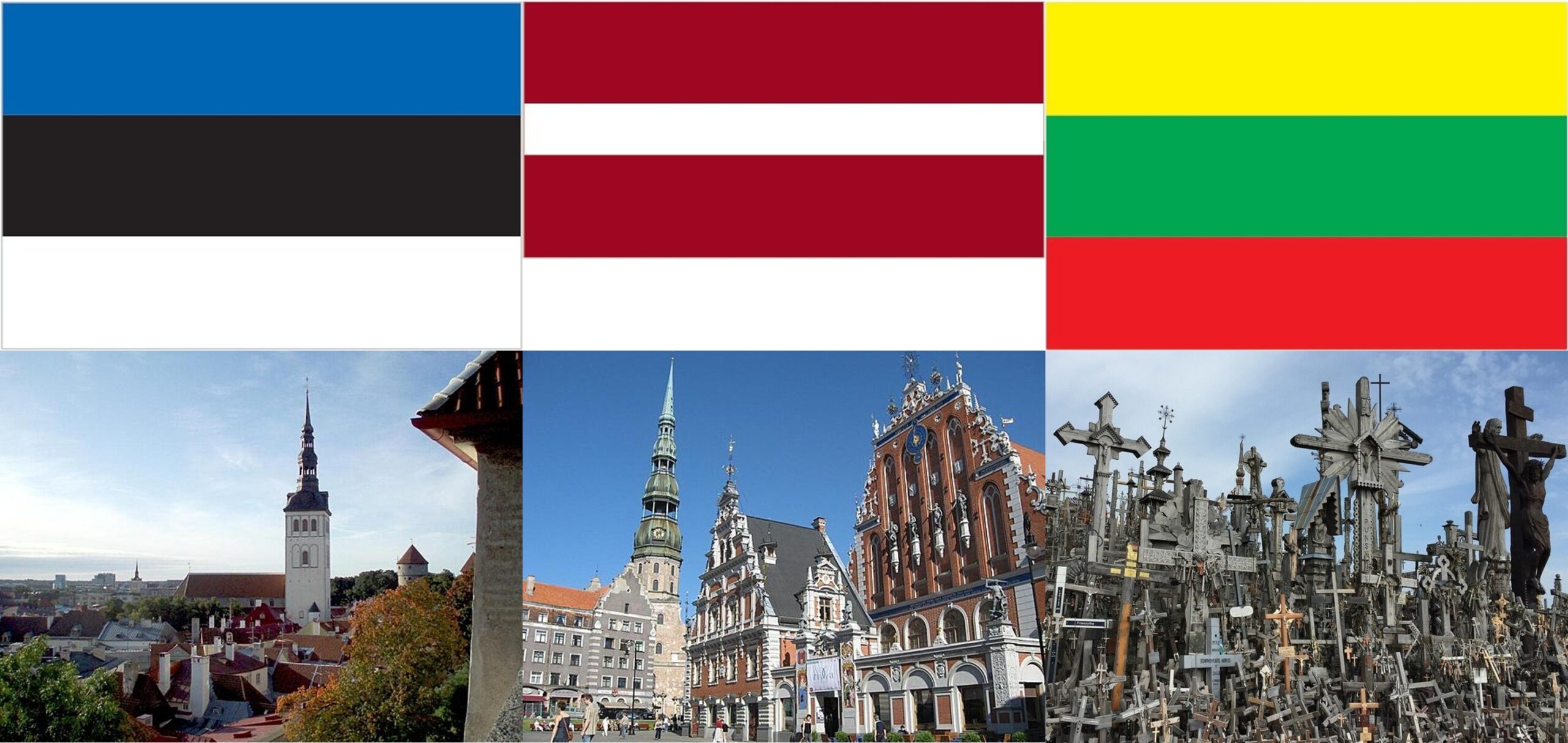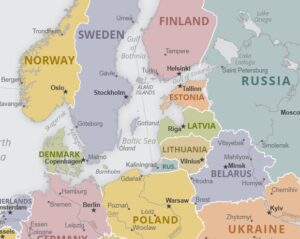Could Putin Take the Baltics?

If I wanted, in two days I could have Russian troops not only in Kiev, but also in Riga, Vilnius, Tallinn, Warsaw, and Bucharest.
-Russian President Vladimir Putin, September 2014
Introduction
Lawrence Freedman quotes this statement from Putin, taken from an article in the Daily Telegraph, in his 2014 Survival article. This assessment was confirmed for Riga, Vilnius, and Tallinn (the capitals of Latvia, Lithuania, and Estonia, respectively, collectively known as the Baltic States) by wargames conducted by RAND in 2014 and 2015. The Wargame estimated it would take no more than 60 hours to reach one or more of the Baltic States’ capitals with a large combined-arms mechanized invasion force. However, that should be re-evaluated given the Russian Army’s poor performance in Ukraine since 2022. Russia’s full-scale combined arms invasion has spent three years mostly bogged down in eastern Ukraine.
Even so, the Russians did successfully seize Crimea in 2014 and continue to hold it (as of 2025), though they have not been able to take most of Ukraine, including Kyiv. The major difference is that Crimea is small and easily isolated, and Ukraine is large (more than 20 times larger in both land area and population) and connected to the rest of Europe. The seizure of Crimea was done by Russian special forces and proxies through a combination of infiltration, isolation, and information, not by a large military invasion. This is a threat that the Baltic States need to be concerned with, perhaps more so than an invasion (though Shlapak and Johnson’s RAND study indicates the importance of that threat and makes recommendations to reduce it). Since those nations are NATO allies, it should be a concern for the United States of America (USA) as well.
Analysis
The three Baltic States are small nations that border Russia – Latvia and Lithuania also border on Belarus, Russia’s ally. They are NATO members, so a military invasion could trigger NATO’s Article V defense clause. But what about an internal uprising? How would NATO allies react to protests from Russian-speaking citizens within those countries, possibly including violent ones? This would parallel the Russian efforts in Crimea and other parts of eastern Ukraine.
Table 1. Comparison of Baltic States with Ukraine, Crimea, and Poland.
| Country or Territory Name | Estonia | Latvia | Lithuania | Ukraine | Crimea | Poland |
| Capital | Tallinn | Riga | Vilnius | Kyiv | N/A | Warsaw |
| Size (km2) | 45,228 | 64,589 | 65,300 | 603,550
(including Crimea) |
27,000 | 312,685 |
| Population | 1,202,762 | 1,821,750 | 2,655,755 | 43,306,477
(including Crimea) |
1,965,177 | 37,991,766 |
| Russian Speakers (%) | 29.6 | 33.8 | 6.8 | 17.3 | Majority | 0 but Russian is recognized as a minority language |
| Orthodox Christians (%) | 16.2 | 19.1 | 3.7 | Approx 67%, some of whom are “Moscow Partriarchate” | Not known | 1.3 |
(Data above about the five nations are from the CIA World Factbook. Regional data about Crimea are from the World Atlas and Britannica.com)
Based on the data, each Baltic state is closer in size and population to Crimea than to Ukraine as a whole or Poland (presented for comparison due to its proximity to the Baltics and similarity in size and population with Ukraine). In particular, Estonia and Latvia have large Russian speaking minorities while Lithuania’s is smaller but sizable. Protecting such groups is a pretense that the Russian government has used in Ukraine, Georgia in 2008, and elsewhere; there is no reason to think they would not do so again. Russian special forces or private military contractors (PMC) could infiltrate and disguise themselves as Russian-speaking citizens, as was done in eastern Ukraine. If some of the locals have pro-Russian sympathies, they might be recruited by the Russian government as proxy forces as well.
The map in Figure 1 below is centered on the Baltic Sea, showing each of the Baltic States and neighboring nations. Note the small part of Russian territory that includes Kaliningrad in the southeastern corner of the sea. This is the headquarters of the Russian Baltic Fleet. It is described as Russia’s “unsinkable aircraft carrier” by Stefan Wolff, Professor of International Security, University of Birmingham (UK) in an article from 2022. The military equipment deployed there includes subsonic and supersonic anti-ship missiles. The Russian military could use this location to isolate the Baltic Sea from most NATO navies or at least make it very expensive to attempt an entry. This would be similar to the isolation of Crimea from the rest of Ukraine by Cossacks acting as a Russian proxy in 2014.
The Russians could also learn from the Iranians and their Yemeni Houthi rebel proxies (described by the BBC) and supply masked or proxy forces with uncrewed aerial systems (UAS) and small boats to harass ships in the Baltic Sea. The Russian government could even go so far as to claim such actions were a threat to Russian shipping and bases in the area and use their naval resources to patrol the Baltic based on that premise, while reserving escalation to large-scale military power for a later phase. This would provide Russia deniability and delay the entry of NATO navies into the Baltic Sea without having to directly confront those ships.
Figure1. Political Map of Northeastern Europe, surrounding the Baltic Sea.

(Map excerpted from europe_pol-1.pdf (cia.gov))
Another major aspect of the Crimean seizure was cyber or information warfare. This was done officially, when the Russian government described positioning of personnel and equipment near Ukraine as a military exercise. An earlier generation of this sort of effort was performed in Georgia, attacking Georgian and sympathetic Western governments’ websites. In Ukraine, unofficial actions were also executed by proxy groups like the Kharkov News Agency (known as NAH for its Russian acronym), which was connected to the Internet Research Agency and Yevgeny Prigozhin, formerly a leader of the Wagner Group. If anything, this activity would increase given the decade’s worth of technological improvements including generative artificial intelligence (AI) to create more dis- and misinformation faster.
Response
Therefore, the threat to Estonia, Latvia, and Lithuania could be similar to the successful seizure of Crimea, rather than the 2022 invasion of Ukraine by the Russian military. The question then becomes; how does the United States of America respond to such threats to our NATO allies?
The three aspects that facilitated the seizure of Crimea were infiltration, isolation, and information. The USA should be prepared to assist the Baltic States in combatting all three of those.
First, infiltration requires moving people, materiel, and money into the target area. The USA has intelligence capabilities from space to undersea. We need to share those data in a timely fashion with our NATO allies. We should also be offering our resources to process and collate the intelligence collected by nations in the region. This should lead to a sort of Baltic Sea “Ten Eyes” group that includes the eight NATO countries with Baltic coastlines as well as Norway and the USA, much like the “Five Eyes” group that includes the USA, UK, Canada, Australia, and New Zealand. This information-sharing group could monitor internal and external threats and look for links to Russia or its proxies.
Isolation of the Baltic States will involve the Russians or proxies taking the initiative in the Baltic Sea to cut off the larger NATO nations’ navies and prevent resupply. This could be Russian proxy forces imitating the Houthi rebels by disrupting shipping at a below-warfare level. Such disruption could even be used as an excuse by the Russian Navy to step up its own actions in the Baltic, or to move ships from the Northern Fleet in. It could also involve the Russians announcing a blockade to, for example, “prevent support of the illegitimate fascist government in [target country], in defense of Russian people there.” Or it could just be a threat to defend Russian sovereignty in Kaliningrad and the Baltic. One approach to overcoming this isolation is to pre-position materiel in the Baltic States, with more stored in Finland and Poland. Finland is separated from Estonia by a narrow waterway (the Gulf of Finland) that NATO would need to keep clear from Russian naval assets including those based at Leningrad Naval Base near St. Petersburg at the tip of the Gulf of Finland. One way to do this might be using long-range missiles as a threat (borrowing the Russians’ own area denial tactic). Poland is connected to Lithuania by a short land border between Kaliningrad (Russia) and Belarus. NATO forces would have to hold this area open to connect the Baltic States to central and western Europe. Prepositioning sufficient forces and transportation assets in Poland would facilitate retaining this corridor to Lithuania.
The previously mentioned fictional quote is an example of the information space: the Russians or proxies claiming a target government is illegitimate and fascist. This was the main thrust of the NAH attacks on the Ukrainian government in 2014 and later. The USA could provide key assistance in this area. The US President has a much larger media footprint than the Estonian President or Prime Minister (for example). We should champion our allies’ causes loudly, accurately, and often. This could be done in a variety of formats, from a formal Presidential address to official statements released by the White House Press Office, as well as more informally via the @POTUS account on X (formerly Twitter).
Another information tactic available is for US diplomatic and military personnel in the Baltics to provide known good reporting and intelligence to NATO Headquarters in Brussels and to Washington DC, via encrypted satellite communications. There are only a few US military units in the Baltics, but ensuring they can get information out would be key to US military planners and policy makers. This should be coordinated with the host government, including a means for them to use the communications channel should their own methods be compromised.
Conclusion
While the threat of a Russian military invasion of one or more of the Baltic States cannot be discounted, it has been reduced by the number of casualties and amount of equipment lost in Russia’s war on Ukraine. The more likely scenario appears to be something similar to Russia’s taking of Crimea based on infiltration, isolation, and information, rather than raw mass and firepower. That type of action was far more successful than the 2014 proxy conflict, or the 2022 invasion of eastern Ukraine. Given the Baltics’ similarity to Crimea in size and population, as well as the opportunity to isolate them by operating from Russian bases in Kaliningrad, a repeat of the Crimea model seems more likely. The USA and NATO need to figure out how to support the Baltic States to prevent that from succeeding.






